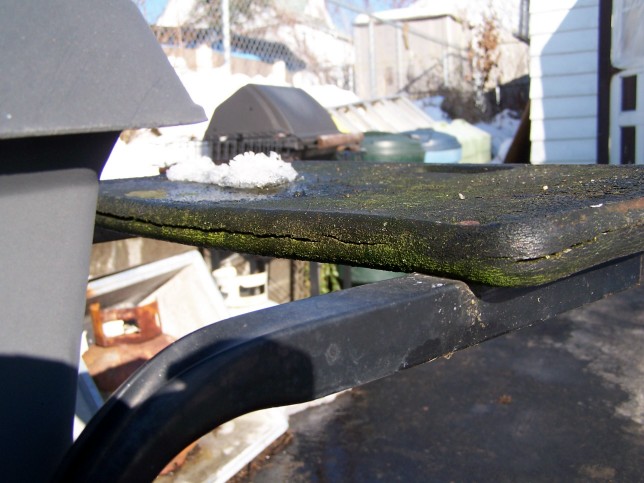Originally Posted By: rprogovitz
This post was automatically imported from our archived forum.
Folks,
First, my expertise is in mycology, I am not a Biologist. My Bio can be found at
http://www.fungibyprogy.com/Mold%20certification.htm
This was NOT an EASY question, so for those who got it right, congratulations!
The answer to the question is ALGAE. Here is an image at 430x mag.

This organism's cellular reproduction is similar to that of Yeasts-reproduction by budding. My supporting evidence is based upon observations made under 430x and 860x magnification, growth structure, reproduction, and other researched taxonomic characteristics. The growth is a "plant-like" organism and classified under the Division Chlorophyta; Kingdom Protista (under review for change). The majority species of Algae are the "aquatic type". However Algae is also commonly found on roofs, siding, concrete, wood, stone, and on many other substrates. There are a few good environmentally safe ways to clean/remove (e.g. Oxygen Bleach) and prevent (e.g. copper strips tacked on to shingles) Algae from growing on surfaces.
The following are explanations of why the other 4 choices are most likely incorrect:
Mildew: A slang term that should NOT be used to describe Molds.
Lichen: An argument can be made for the organism in the photo as being a Lichen (due to its squamulose growth form). However, there was a lack of reproductive spore "sacs" (asci-as in the Phyla; Ascomycota), and a lack of spore mass called a mazaedium or a ruptured apothecia, in the specimens analyzed. Lichens are a successful alliance between a fungus and an alga.
Lichens occur in one of four basic growth forms;
a.. crustose - crustlike, growing tight against the substrate.
b.. squamulose - tightly clustered and slightly flattened pebble-like units.
c.. foliose - leaflike, with flat sheets of tissue not tightly bound.
d.. fruticose - free-standing branching tubes.
Mold: There was an absence (microscopic) of any sporulating structures or spores.
Moss: A weak argument can be made for the organism in the photo as being a Moss. However, Mosses are small green plants. Typically they consist of a stem not much thicker than a thick hair, densely covered with leaves maybe 1/16th or 1/8th of an inch long. Often moss stems branch and rebranch. Usually many mosses grow together forming a thick green carpet. Sometimes this carpet is no larger than a dime, but other times it may cover areas several feet in diameter. Like all bryophytes, Mosses, have two forms of reproduction, asexual or vegetative reproduction and sexual reproduction. There was absence of any Moss growth characteristics in the example used in this poll.
So there you have it, and I will gladly entertain any questions per my
observations.

